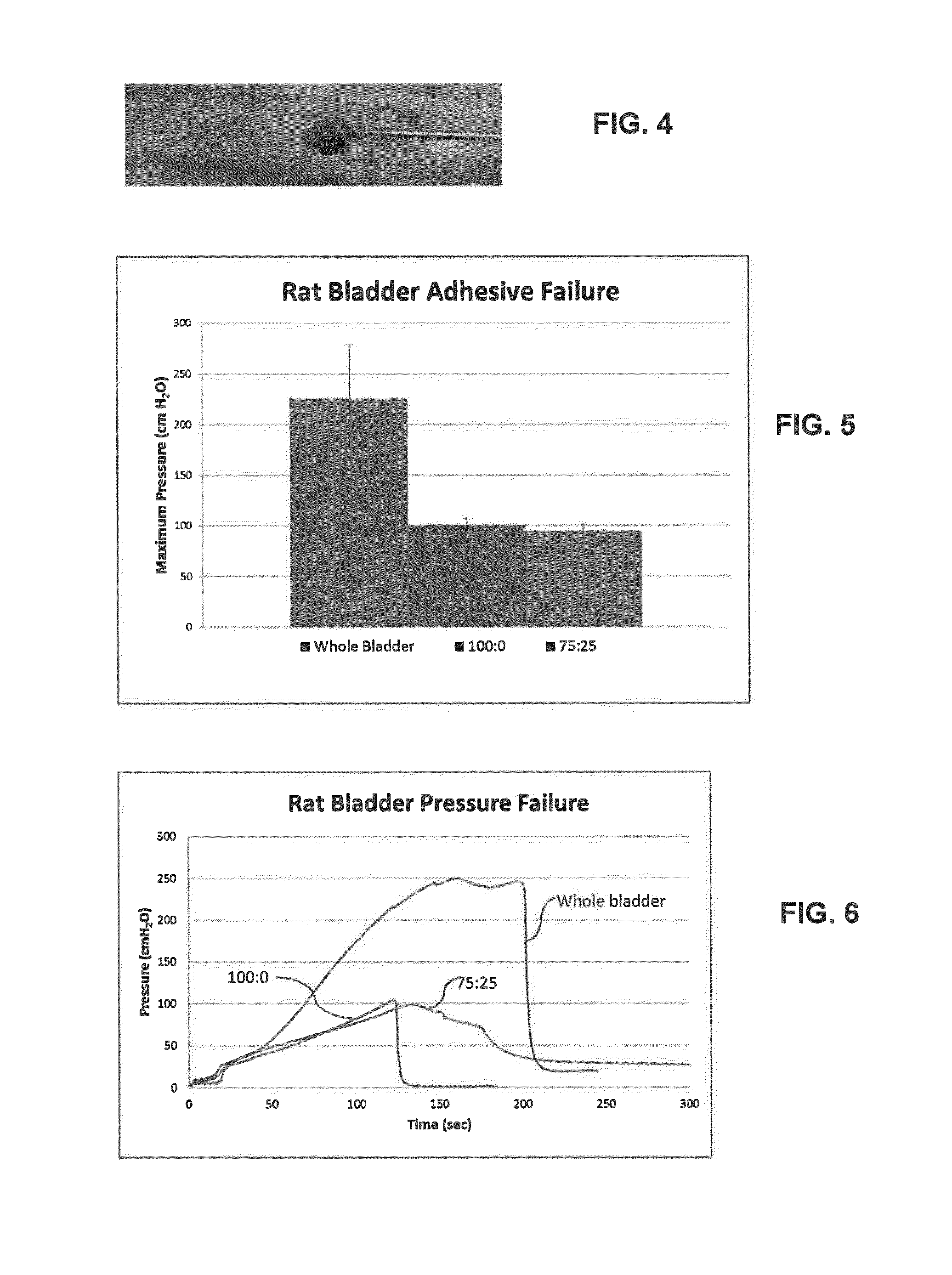Compliant Surgical Adhesive
a surgical adhesive and adhesive technology, applied in the field of surgical adhesives, can solve the problems of limited treatment of bladder injuries, difficulty in achieving a useful balance between both qualities, and improper distention of the bladder wall, and achieve the effect of strong, pliable and highly adhesive seals
- Summary
- Abstract
- Description
- Claims
- Application Information
AI Technical Summary
Benefits of technology
Problems solved by technology
Method used
Image
Examples
example 1
[0046]A bi-functional thermoreversible gelling copolymer was prepared through multi-step process. Acrylation was first performed on a PEO / PPO block copolymer (Tectronic® T1107, MW=15,000) in dicholormethane. Briefly, Tetronic® T1107 with triethlyamine (TEA) and acryloyl chloride was stirred for 24 hours. Triethlyammonium precipitate was filtered out and the product was neutralized to pH 7.0, and then washed with ethyl ether. A partially acrylated T1107 copolymer was then modified using click chemistry to replace the unreacted terminal hydroxyl groups with N-hydroxysuccinimide (NHS) through two reactions (1) 4-dimethylaminopyridine (DMAP) and Succinic Anhyride in tetrahydrofuran (THF) for 12 hours, and (2) NHS and dicyclohexylcarbodimide (DCC) in THF for 4 hours. Acrylation percent and NHS conversion rate for the bi-functional copolymer (NHS+) were 63% and 25%, respectively with 57% product yield.
[0047]A fully acrylated block copolymer was used to form a blend with the bi-functional ...
example 2
[0051]Adhesives were prepared from blends (100:0, 75:25) of fully acrylated T1107 (NHS−) and bi-functional T1107 (NHS+) and crosslinked with DTT, as described in Example 1.
[0052]Maximum pressures held by punctured rat bladders (Pel-Freez Biologicals Inc., AR) sealed with modified T1107 adhesive were evaluated using a custom ex vivo device as illustrated in FIG. 4. Bladders were stored in 30% sucrose solution at 4° C. until testing. Prior to testing, a small, approximately 2 mm puncture was made on the dome of the bladder using an 18 gage needle. The bladder was sutured and super glued to a shaved 18 gage needle to eliminate leakage from attachment site during testing, then warmed to 37° C. A 50 μl adhesive sample of modified T1107 / DTT (200 μl to 25 μl ratio, pH=7.4) was applied to the hole and allowed to cure for 1 h in 37° C. hydrated condition. Testing was performed on a submersed bladder within warmed (37° C.) saline solution. The specimen was subjected to increasing intravesicul...
PUM
| Property | Measurement | Unit |
|---|---|---|
| pH | aaaaa | aaaaa |
| temperature | aaaaa | aaaaa |
| size | aaaaa | aaaaa |
Abstract
Description
Claims
Application Information
 Login to View More
Login to View More - R&D
- Intellectual Property
- Life Sciences
- Materials
- Tech Scout
- Unparalleled Data Quality
- Higher Quality Content
- 60% Fewer Hallucinations
Browse by: Latest US Patents, China's latest patents, Technical Efficacy Thesaurus, Application Domain, Technology Topic, Popular Technical Reports.
© 2025 PatSnap. All rights reserved.Legal|Privacy policy|Modern Slavery Act Transparency Statement|Sitemap|About US| Contact US: help@patsnap.com



